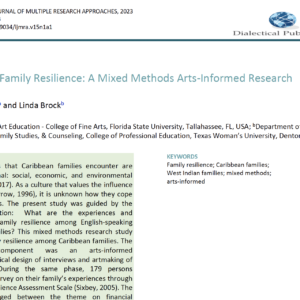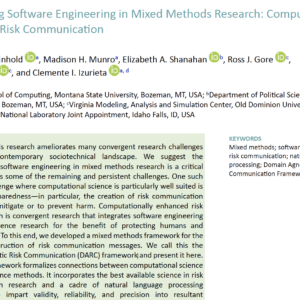15(2). 02. Juxtaposing Joint Displays with Mixed Methods Research Rationales: A Mixed Methods Research Systematic Methodological Review
$30.00
Description
Authors
Elizabeth A. Svoboda(a) and Timothy C. Guetterman(b)
(a) Department of Educational Psychology, University of Nebraska – Lincoln, Lincoln, NE, USA; (b) Department of Family Medicine, University of Michigan, Ann Arbor, MI, USA
Abstract
Systematic integration of quantitative and qualitative research is a known challenge when conducting mixed methods research (MMR) and joint displays are one method to make the integration process more concrete. A systematic review of the published literature on joint displays and MMR rationales was conducted in order to juxtapose joint display typologies with corresponding MMR rationales. Data from the mixed methods research systemic methodological review (MMR-SMR) were summarized using descriptive statistics, and a codebook was used to look for patterns and to develop themes that were integrated with descriptive codes. There were 71 joint displays across 27 studies that met the inclusion criteria. The MMR-SMR provides a comprehensive, updated examination of joint displays in the methodological literature and includes several contributions to the field of mixed methods research. One finding suggests that joint displays have evolved beyond their original typologies and an updated typology is provided. The current MMR-SMR identified a novel data transformation joint display that presented the conversion of qualitative data into quantitative data in a tabular format. It is unique that combinations of joint displays are being used (e.g., a side-by-side joint display that incorporates a theoretical lens or a path diagram) and that multiple joint displays are being used in individual studies. Researchers are recommended to strongly consider using joint displays as a method of integration because it can provide a structure to think about integration and to report the results of integration, which can further enhance transparency of the mixed methods research integration process.




